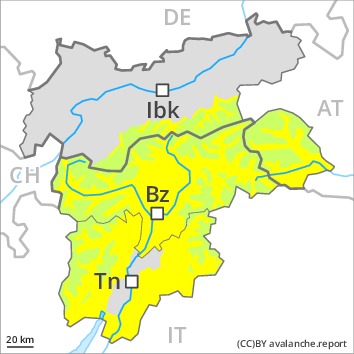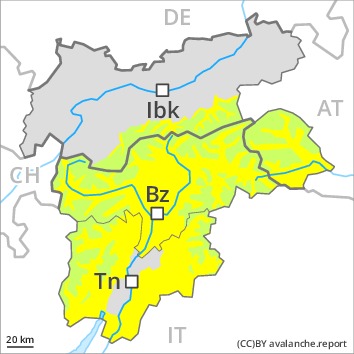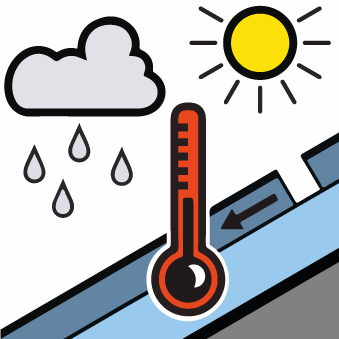AM

Danger level
 | 2600m
|
Avalanche Problem
PM

Danger level
 | 2600m
|
Avalanche Problem
Currently there are generally favourable conditions. Gliding snow is to be evaluated with care and prudence.
A clear night will be followed by generally favourable conditions. Slight increase in avalanche danger as a consequence of warming during the day and solar radiation.
Gliding avalanches are the main danger. These can reach dangerously large size. Caution is to be exercised in particular on steep grassy slopes on sunny slopes below approximately 2600 m. Individual gliding avalanches can also be released in the night or in the morning. Areas with glide cracks are to be avoided.
Moist avalanches can in isolated cases be released. This applies in particular in case of a large load, especially in the afternoon. Caution is to be exercised in particular on steep sunny slopes below approximately 2600 m.
Dry avalanches can additionally be released in deeper layers, in particular on extremely steep shady slopes above approximately 2300 m at transitions from a shallow to a deep snowpack. Such avalanche prone locations are very rare.
Snowpack
dp.2: gliding snow
dp.10: springtime scenario
Outgoing longwave radiation during the night will be good. The surface of the snowpack has frozen to form a strong crust and will hardly soften at all. In steep terrain there is a danger of falling on the hard snow surface.
The old snowpack will be moist. This applies on steep sunny slopes below approximately 2600 m.
Isolated avalanche prone weak layers exist in the old snowpack, in particular on steep sunny slopes below approximately 2600 m, also on shady slopes above approximately 2300 m in areas where the snow cover is rather shallow.
Tendency
A clear night will be followed by favourable conditions. The avalanche danger will increase but remain within the current danger level. The danger of gliding avalanches will persist.











